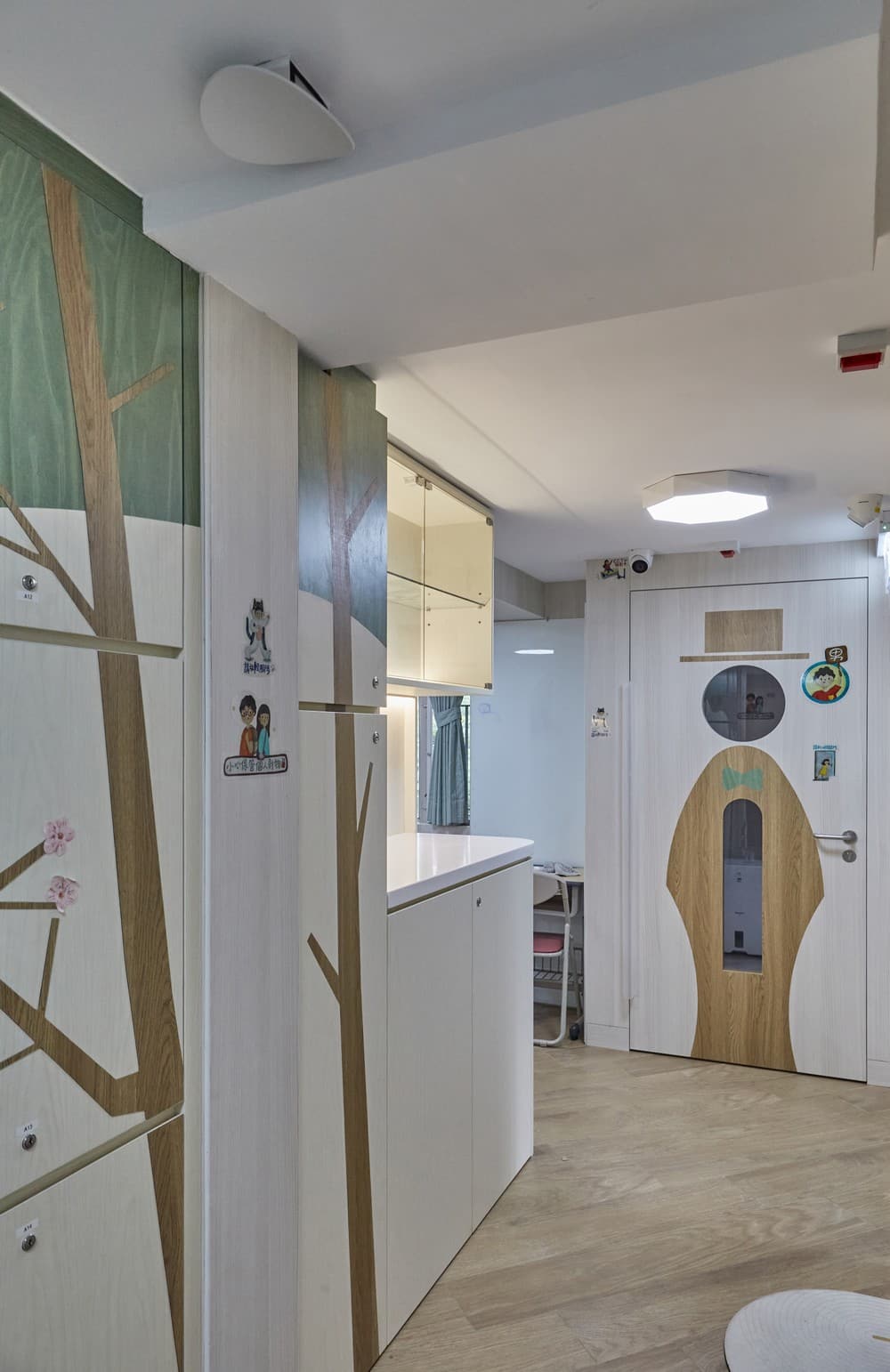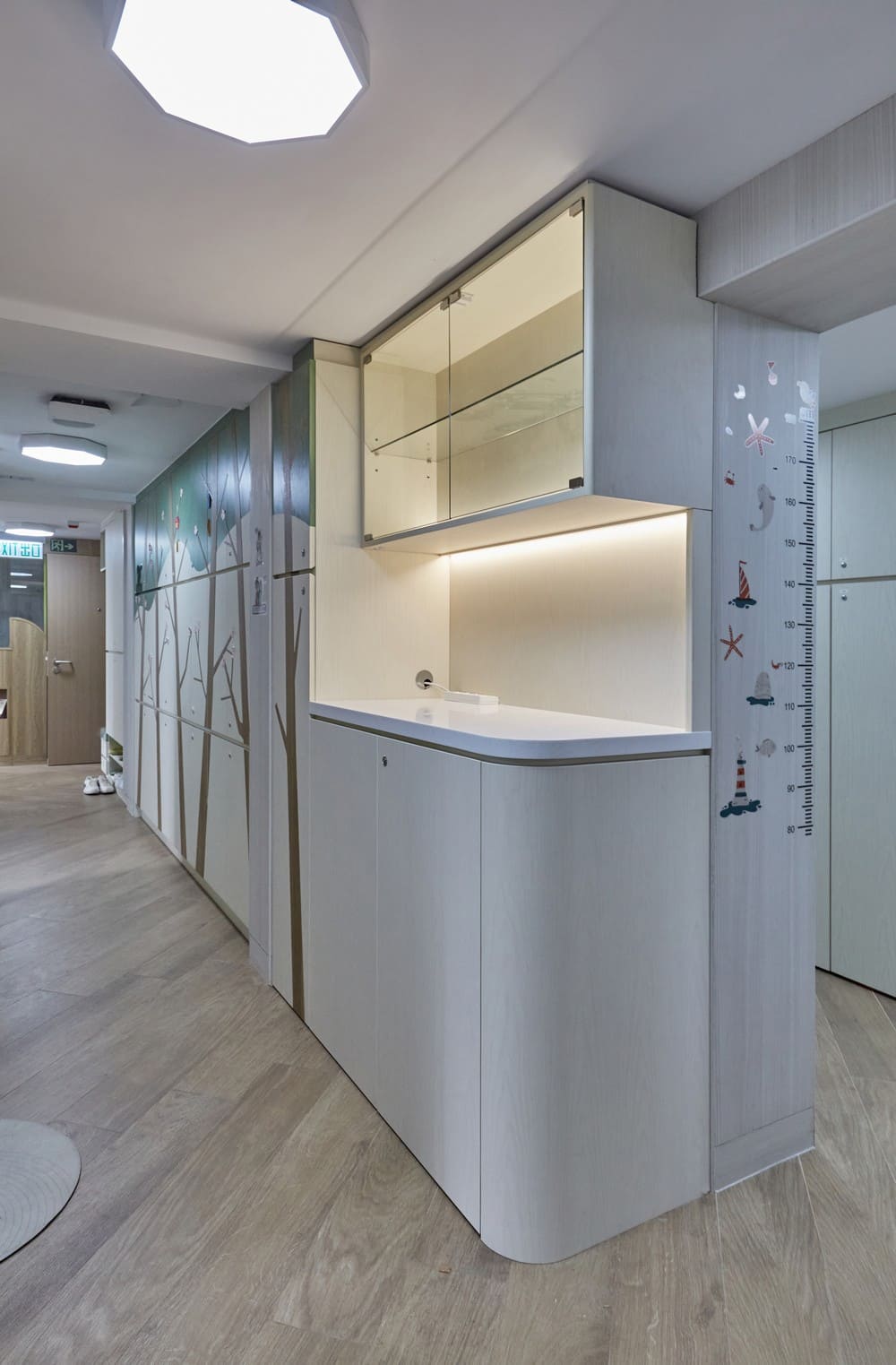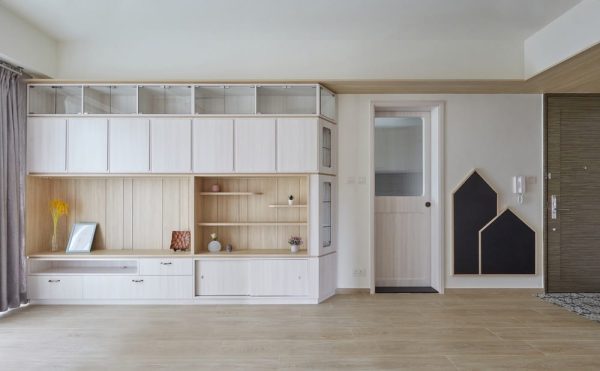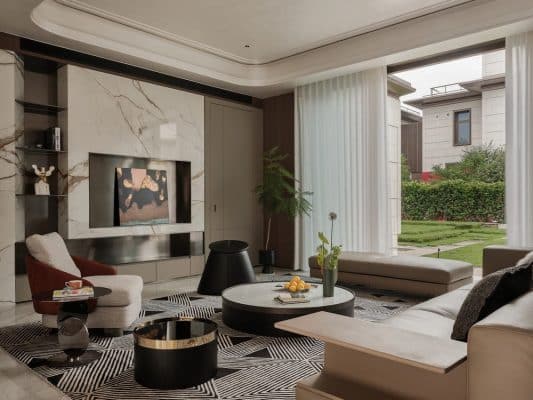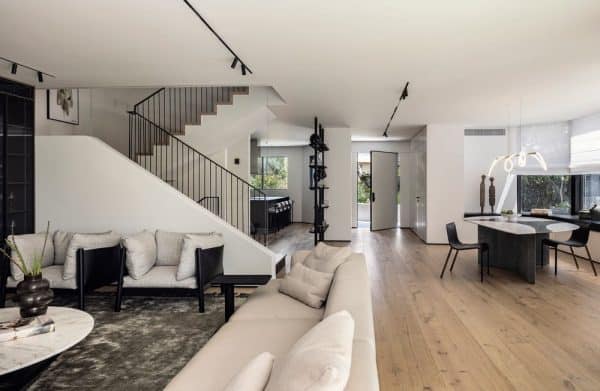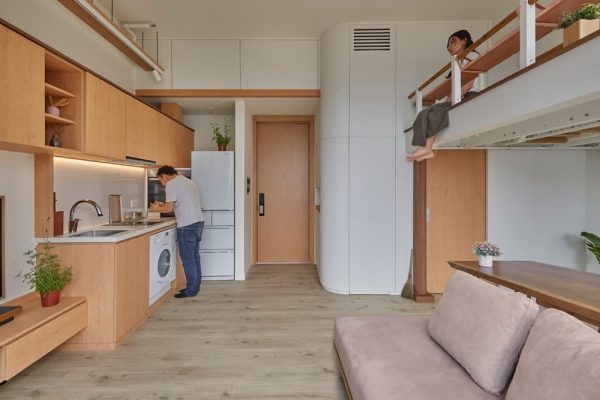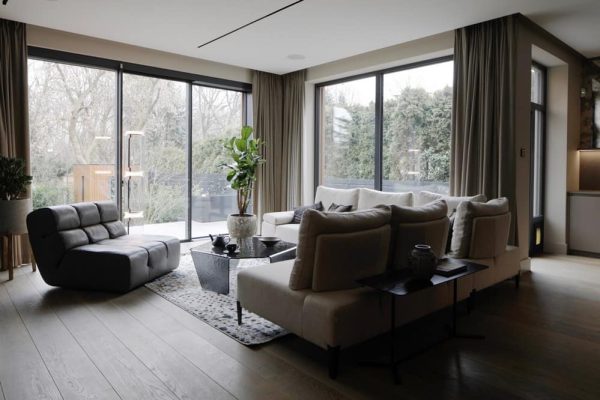
Project: Therapy Tree Home
Interior Design: Sim-Plex Design Studio
Location: Kowloon, Hong Kong
Size: 2500 sq.ft
Photo Credits: Sim-Plex
Therapy Space With Serene Elements Of Tree & Nature
With the continuous development and changes in society, many issues arise within primary families, sometimes temporarily separating children from their families. Some children may even have traumatic experience. In Hong Kong, there are non-governmental organizations (NGOs) dedicated to helping children grow by providing them with residential spaces that resemble a family environment. Social workers and house parents take care of their daily lives. However, as time passes and the number of children gradually increases, the existing spaces tend to be insufficient or under-utilised. Some residential facilities also begin to age, and the original designs rarely consider the specific needs of children. Therefore, there is a need for re-planning and design. In addition to expanding the existing functionality and spaces, can we consider more child-centered design ideas or elements from the perspective of their physical and mental well-being? In the existing residential floor plan, apart from centralized functionality, can we adopt different spatial strategies to better accommodate children with traumatic experiences? While redesigning the spaces, can we also take on more social responsibilities?

Sim-Plex takes trees as its guiding principle. Trees are important natural elements that represent the existence of nature and the power of life. Natural environments help reduce stress and anxiety. With the concept of “Therapy Tree Home,” this project not only brings the natural outdoor scenery of tree , lights and shadows into the interior but also incorporates designs that embody the tranquil atmosphere and abstract of trees, such as tree-shaped climbing ladders, storage stairs, pillars, and patterns, creating a coherent space for healing children’s body and mind. In terms of spatial layout, to better integrate children with traumatic experiences, individual independent wardrobe and desk spaces are added to each bed in the shared residential space. These spaces not only serve as study areas but also provide a place for children to self-regulate and relax, like tree hollows. The design also incorporates curved corners and elements to ensure the safety of children. With modular storage units and different types of stairs and materials, the space is flexible and suitable for children of different ages.
Based on the curved safety design and flexible modular storage functionality, the Therapy Tree Home creates a layout where the natural and design elements of tree, lights and shadows coexist, forming a healing and therapy space for children’s minds of different ages and backgrounds.
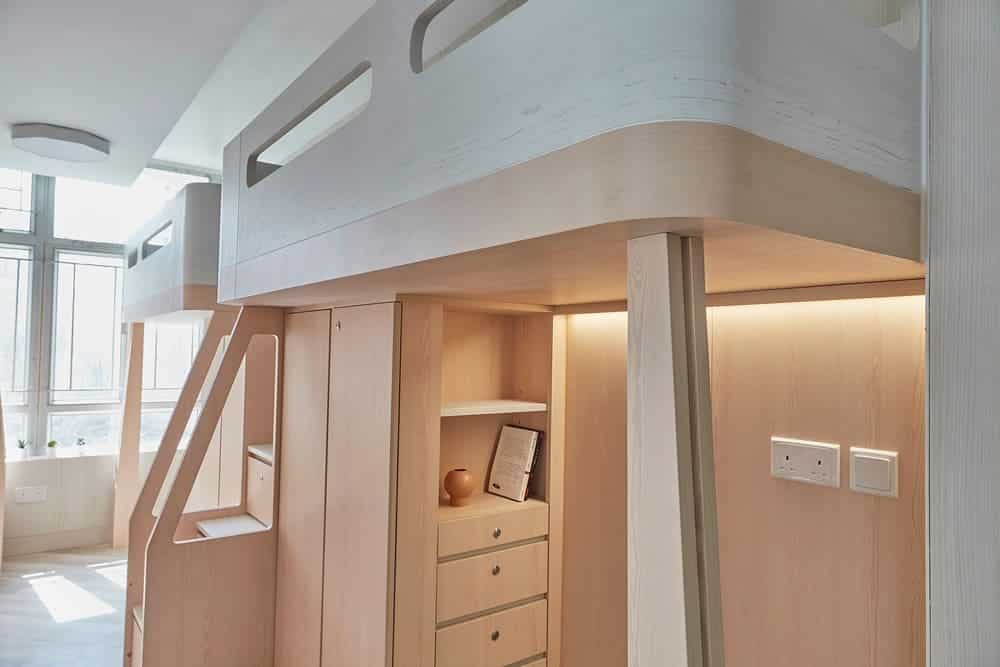
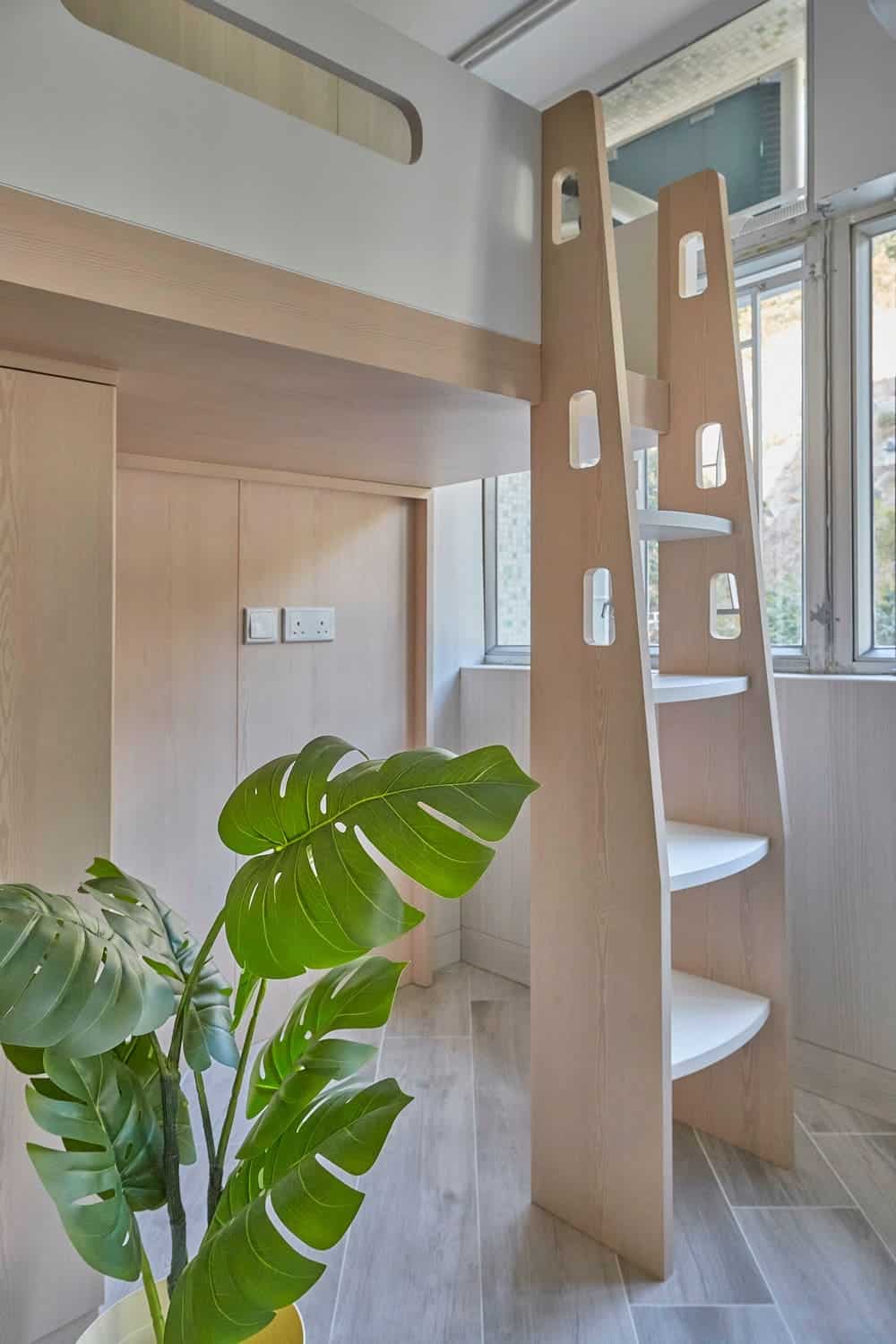
Coexistence Of Inclusion & Independent Self-Relaxation Areas
In a children’s home, some residents have experienced issues within their primary families and even have traumatic experiences, so extra caution is needed in terms of space. In the overall layout, the principle of separating male and female residents is still followed. Each dormitory can accommodate four people, abandoning the previous practice of centralized functionality, such as bunk beds and rows of desks, which not only obstructed the view of trees and natural light from the windows but also provided very little floor space for activities, without considering individual independent areas. Children with traumatic experiences not only need the care of house parents and guidance from social workers but also require personal independent areas for self-regulation and relaxation.
Therefore, in the planning process, all beds are raised, and the bed surrounding backpane have openings to facilitate the care of house parents while reducing the sense of confinement. The lower level is supported and divided by storage wardrobes, allowing each bed to have a corresponding independent wardrobe and space for flexible placement of purchased desks. The wardrobe sides also incorporate bookshelves and drawers for the convenience of children to study in their independent areas on the lower level. Warm white lights are installed, which can be turned on when children are studying. In this independent desk space, residents can also engage in self-regulation and relaxation of their minds, resembling the healing effect of a tree hollow.
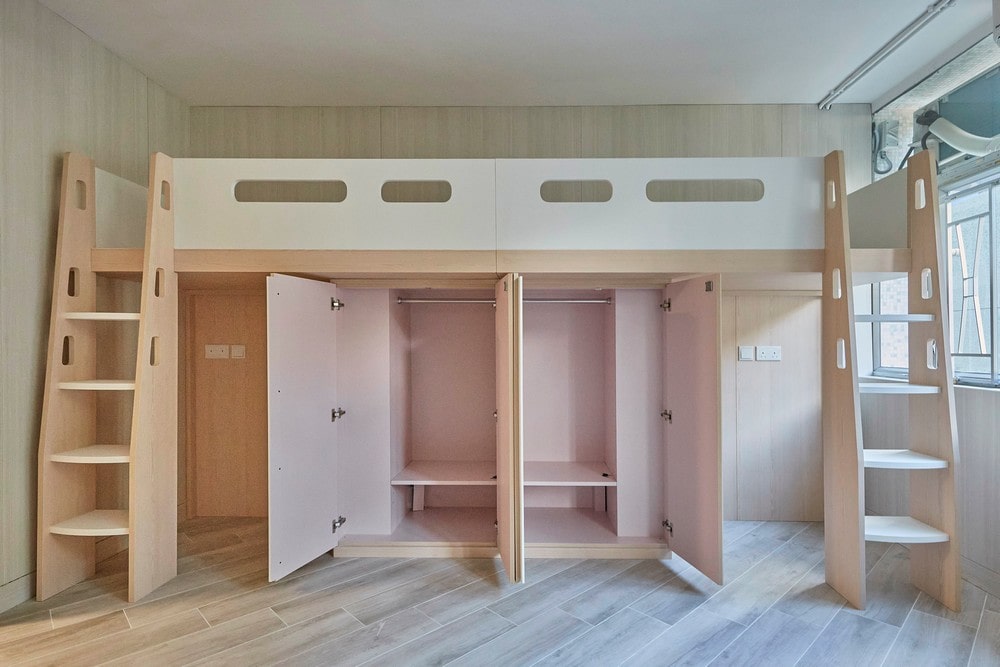

Curved & Natural Design Elements For Children’s Safety
Children often move around in living spaces, and if there are sharp corners, they are prone to accidents and injuries. Therefore, this project incorporates curved corner designs and elements inspired by trees and nature. The upper-level beds are shaped with large curved corners along the circulation pathways to avoid collisions. The materials are arranged in alternating patterns of maple, ash oak, and white oak formica boards, resembling the natural textures of wood. Some beds also incorporate natural elements in the form of hill-shaped designs. The columns, climbing ladder and storage staircase supporting the upper-level beds are shaped like streamlined narrow leaves at the top and widening towards the bottom, while the handrails of the ladders have hollow spaces and curved corners to prevent injuries and allow natural light to penetrate.
In the arrangement of the living room, features such as sofa and dining seats are paired with movable coffee tables, which also incorporate curved designs to prevent collisions. Different colored wood grain materials are used on different floors, and some include nature-inspired patterns such as trees and hills to prevent the space from feeling dull and to enhance the natural atmosphere. The room of house parents and social works was planned with a centralised working desk and book shelves for their discussion of work.
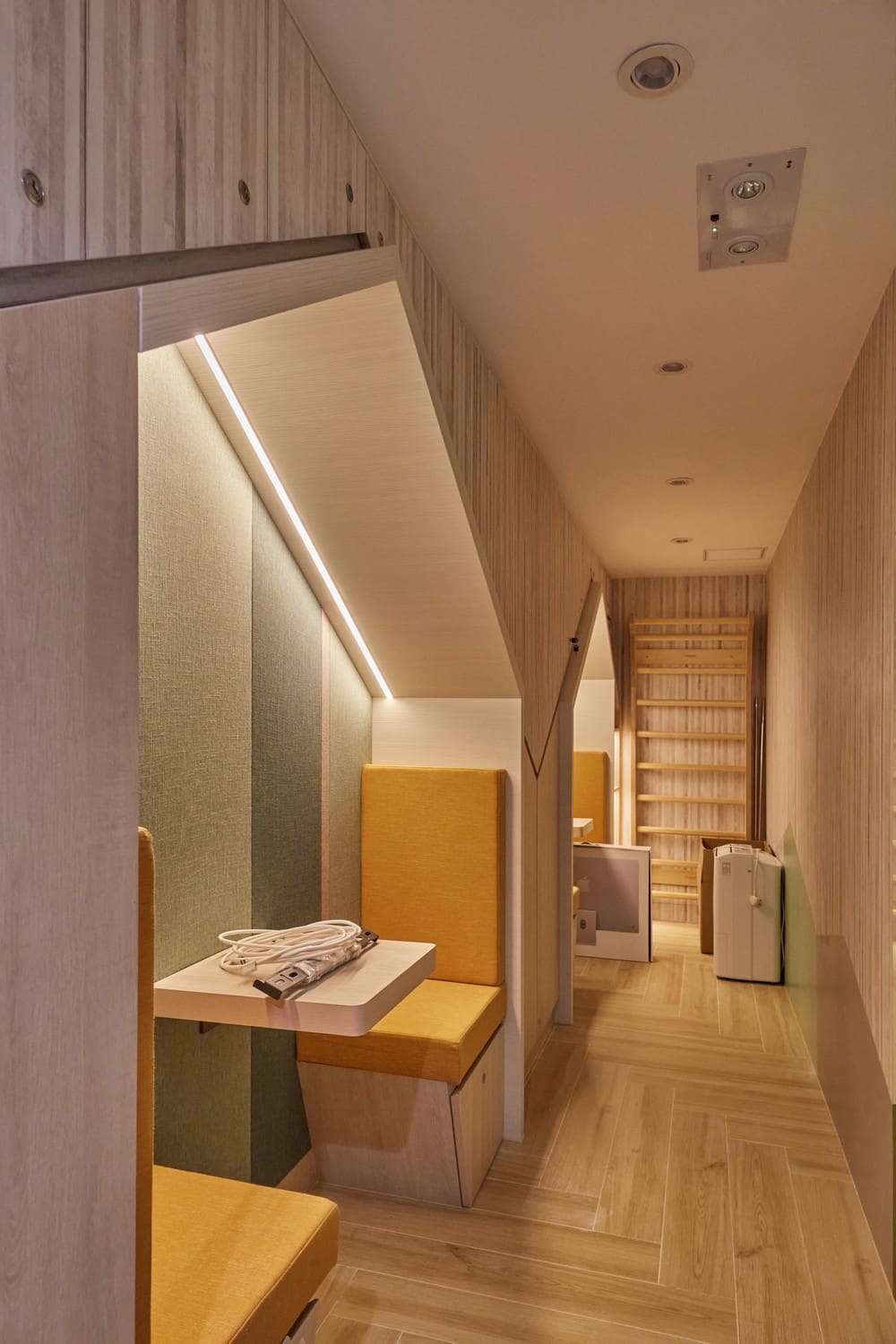

Multiple Modular Furniture & Flexible Stairs For Children Of Different Ages
In the children’s home, apart from the distinction between boys and girls, there is also a wide age range from four to eighteen years old. This includes younger children as well as older youth. The existing dormitories were all designed with the same furniture, which posed inconvenience and safety concerns for younger children using the stairs. In the redesign process, flexibility for accommodating children of different ages and genders was taken into consideration: For children aged four to eleven, storage stairs with handrails are provided, positioned between two beds. This ensures safety and convenience for younger children who are smaller in body size. For youth aged twelve to eighteen, climbing ladders are provided, as they are taller and more capable of using them easily. The design of the lower section of the steps is deeper, making it convenient for going up and down, and handrails are also provided for safety. The furniture combinations are adjusted according to different floors and positions. The upper bunk beds are sometimes arranged horizontally in a row and other times arranged vertically side by side. The principle is to avoid obstructing natural light near the windows, and the back panels of the beds also have partial openings to allow light to pass through. There are also material distinctions between boys’ and girls’ dormitories. Boys’ dormitories use materials with heavier textures such as white oak and maple, while girls’ dormitories are furnished with lighter and cooler materials such as pure white and ash oak. The storage wardrobes inside are also equipped with grey-blue and pink formica boards for boys and girls, respectively.
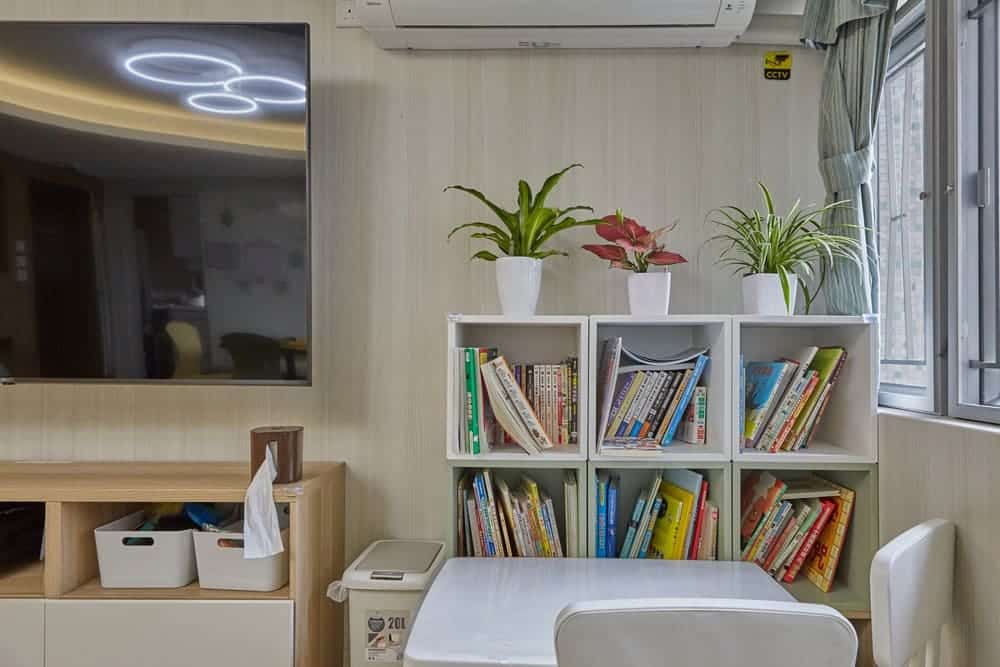
The material selection follows the principles of children’s health and sustainability. Fire-resistant and E0 grade formica boards are used, which are also more resistant to wear and tear. Plywood and fabric cotton are also verified to be flame retardant. The combination of bed sets and storage cabinets is designed for flexible installation, allowing for disassembly and reassembly in another location if necessary, promoting reusability and sustainability.
This project “Therapy Tree Home” not only incorporates curved safety designs, multiple storage functions, and natural tree elements, but also aims to create a space layout that embodies both inclusiveness and independence, providing a healing accommodation environment for children of different ages and backgrounds.


